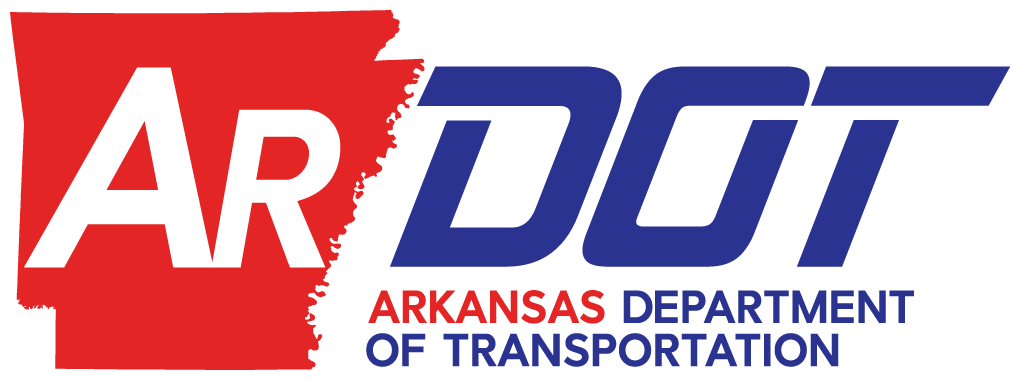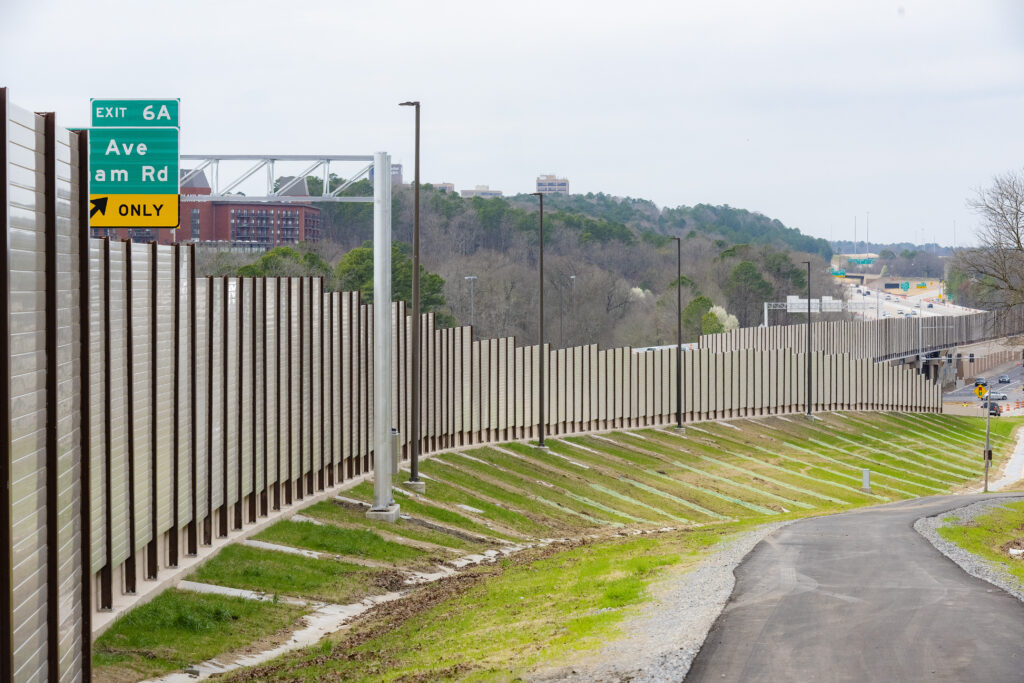
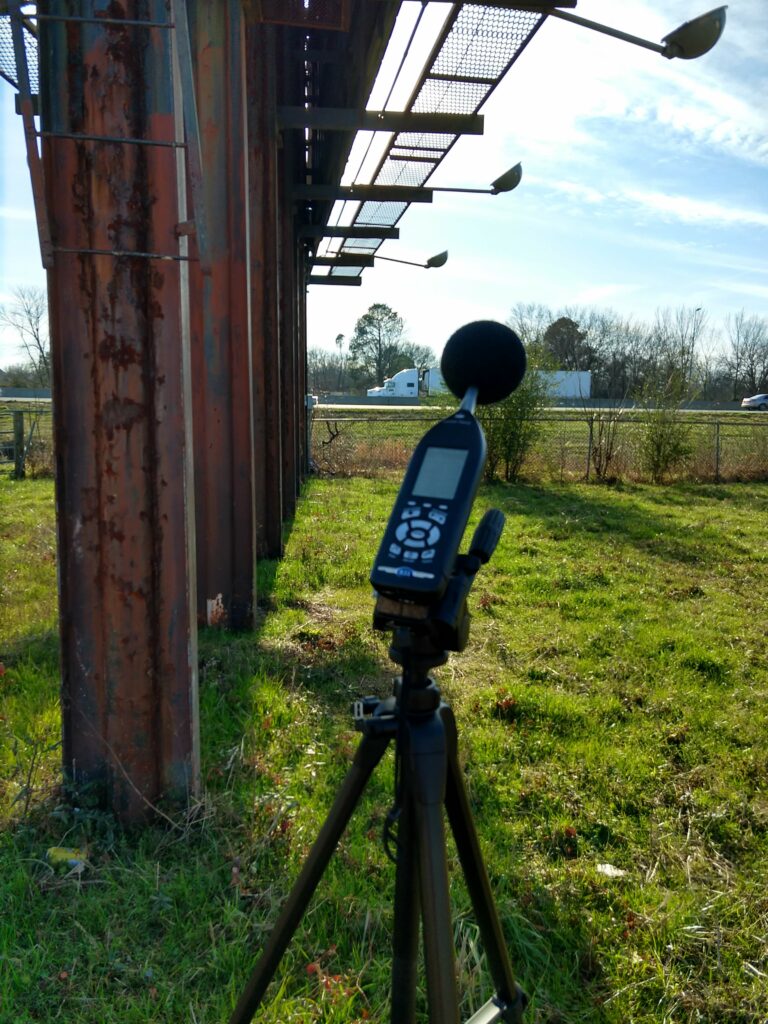
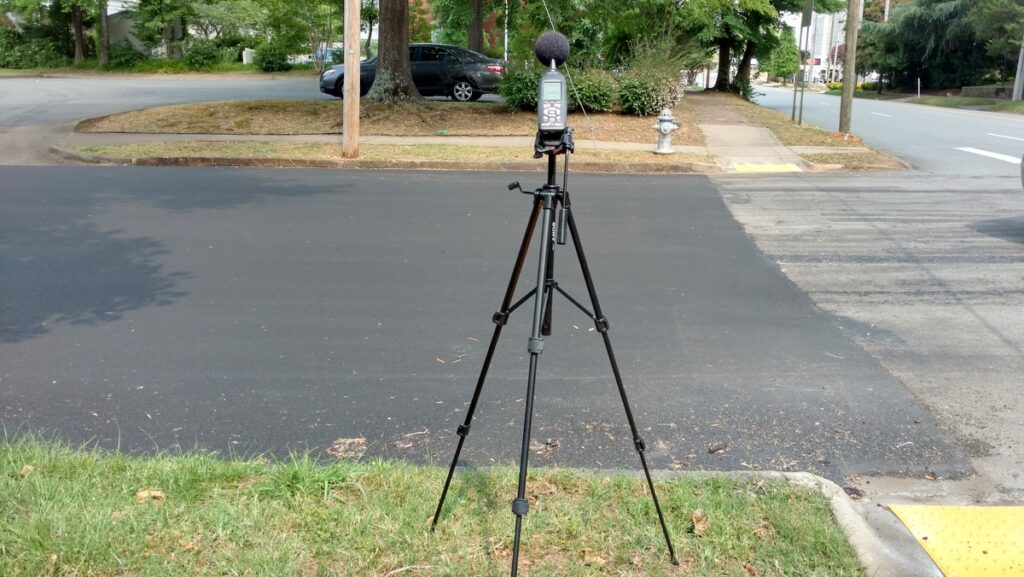
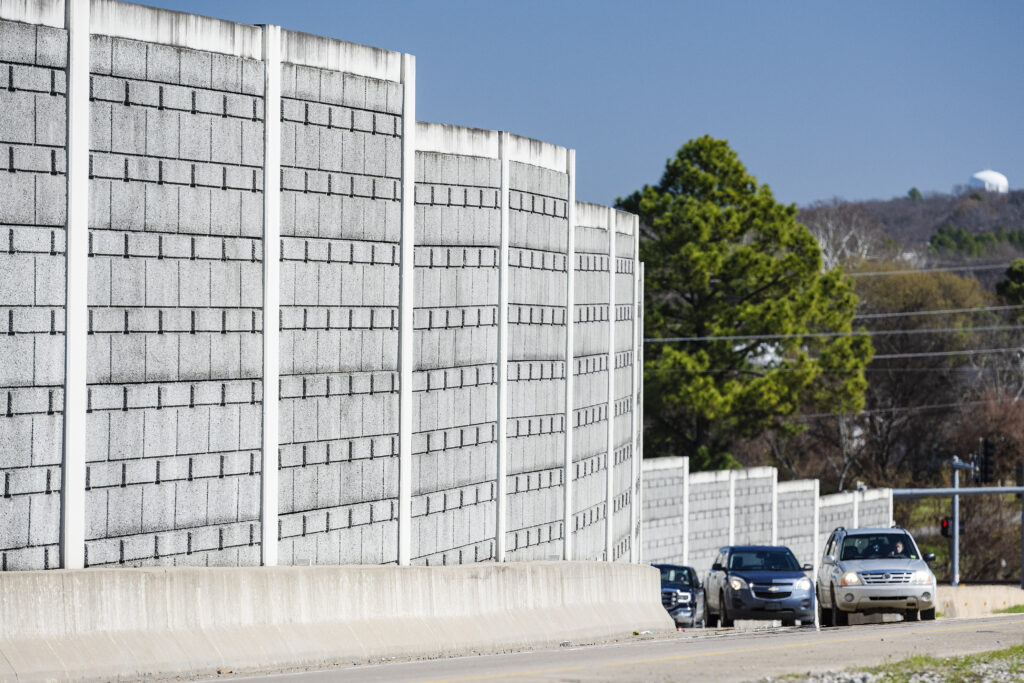
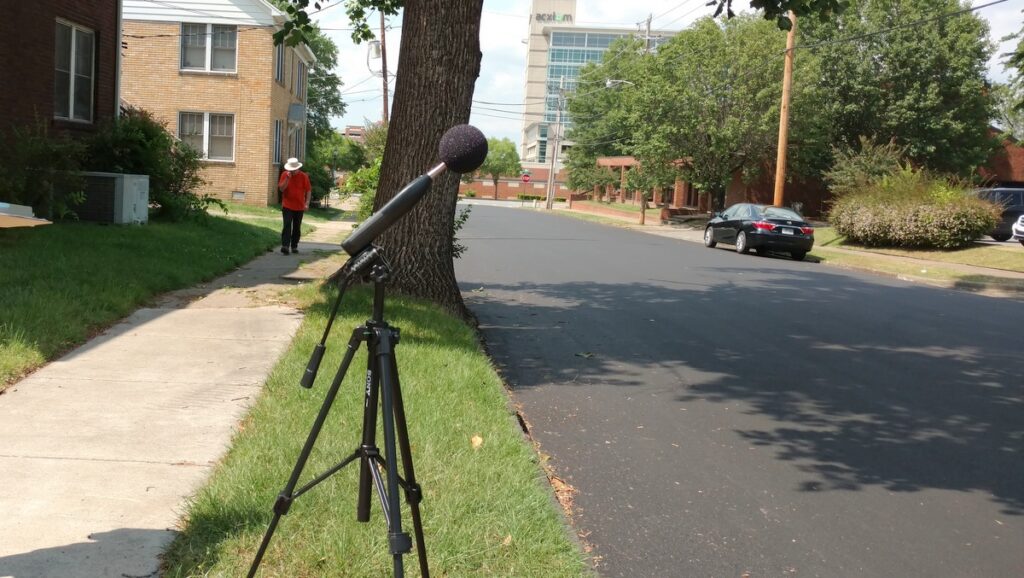
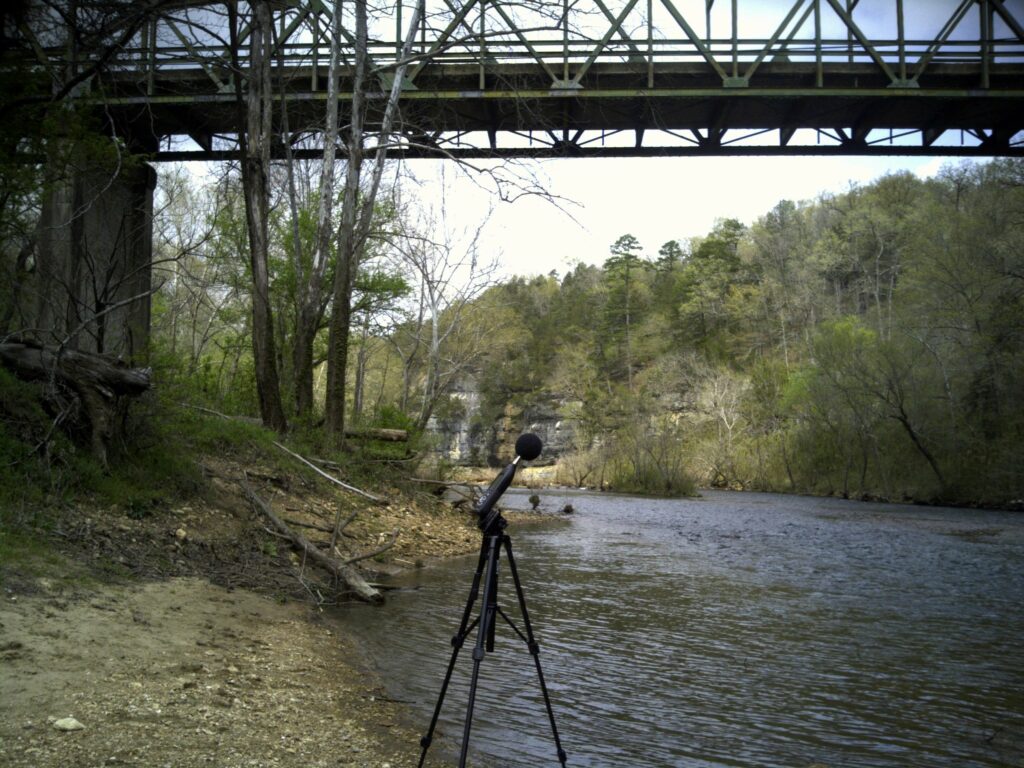
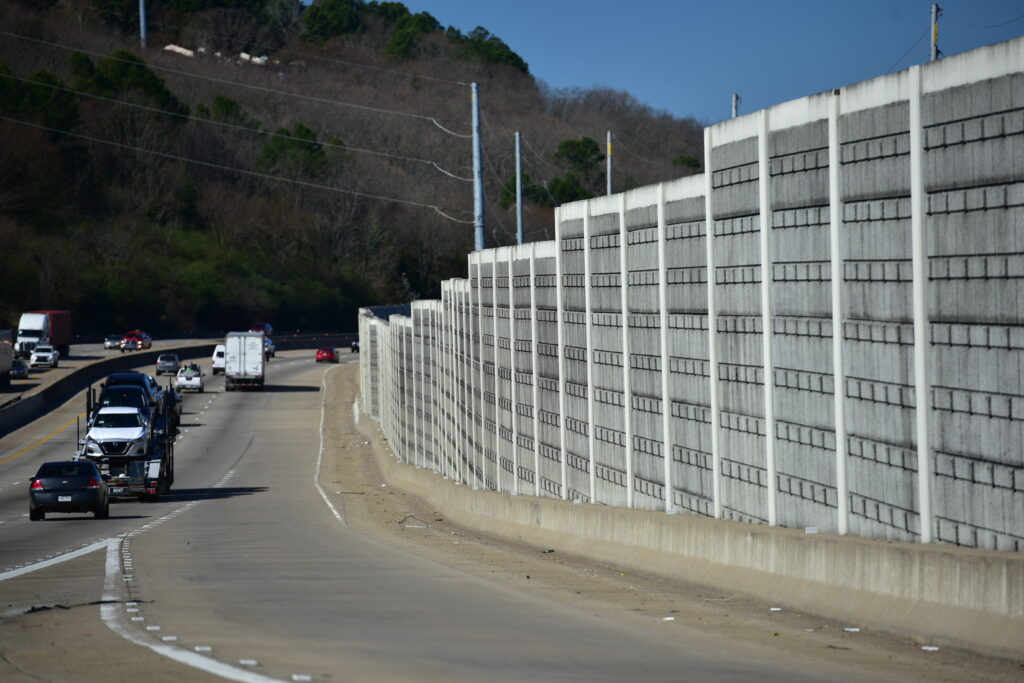
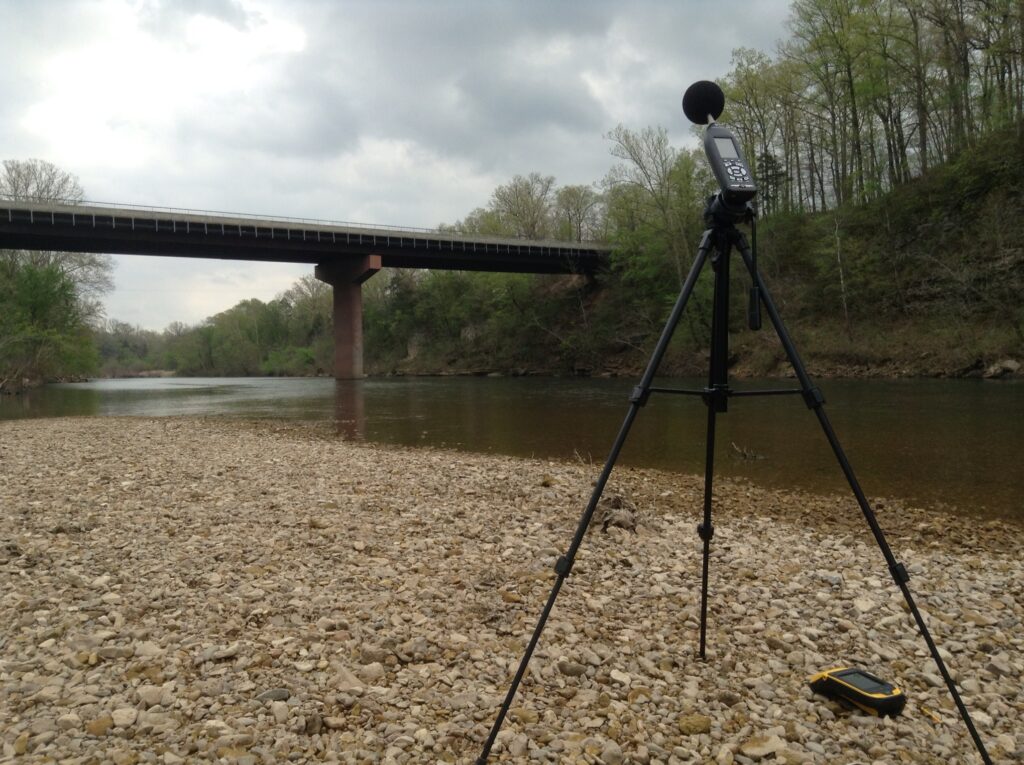
Noise analyses associated with highway projects are performed in accordance with the procedures and provisions of Title 23, Code of Federal Regulations (CFR), Part 772, U.S. Department of Transportation, Federal Highway Administration (FHWA), and Procedures for the Abatement of Highway Traffic Noise and Construction Noise. These regulations establish a requirement for a noise assessment for any proposed federal or federal-aid project. It is ARDOT policy that highway traffic noise prediction requirements, analysis, and abatement criteria comply with the noise standards established by 23 U.S.C 109(i). Procedures for noise impact and abatement analysis can be found in ARDOT’s Policy on Highway Traffic Noise Abatement.
A noise analysis generally includes:
- Identifying existing land uses and potential noise sensitive receptors, as well as undeveloped lands for future planning purposes.
- Measuring and/or estimating existing noise levels.
- Determining Design Year No-Action noise levels.
- Predicting Design Year Build noise levels for all project alignment alternatives.
Predicted noise levels are modeled using FHWA Traffic Noise Model software. Model input components include traffic counts, vehicle speeds, truck percentages, and roadway cross-section information. Predicted noise levels are then compared to the FHWA noise abatement criteria (NAC) to determine if an impact will occur. Noise impacts are also considered to exist when traffic noise levels are predicted to increase by 10 dBA (“substantial increase”) or more over existing levels.
Noise abatement must be considered for proposed projects when the predicted noise levels at noise sensitive receptor locations approach or exceed the FHWA NAC and/or substantial increases occur. Project development generally includes efforts to avoid or minimize noise impacts through alignment shifts and overall avoidance of residential areas. If this is not possible, other types of measures that can be considered for mitigating highway noise impacts include:
- Modifying vertical and horizontal alignments.
- Implementing traffic controls.
- Constructing noise barriers.
Noise abatement measures are evaluated on the basis of being reasonable and feasible. Reasonable usually relies on factors such as cost effectiveness, number of receptors protected, residential support for the abatement measures, and the physical and visual access of adjacent properties. The feasibility of abatement measures may be determined by topography, access points, drainage, safety, and maintenance requirements. Where noise abatement considerations are warranted, every effort will be made to achieve adequate noise level reductions.
